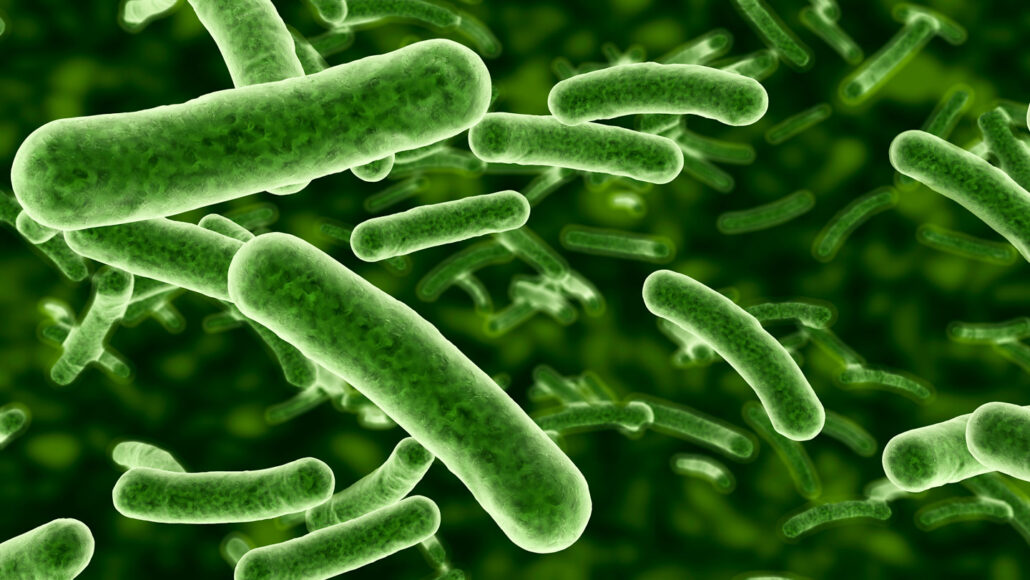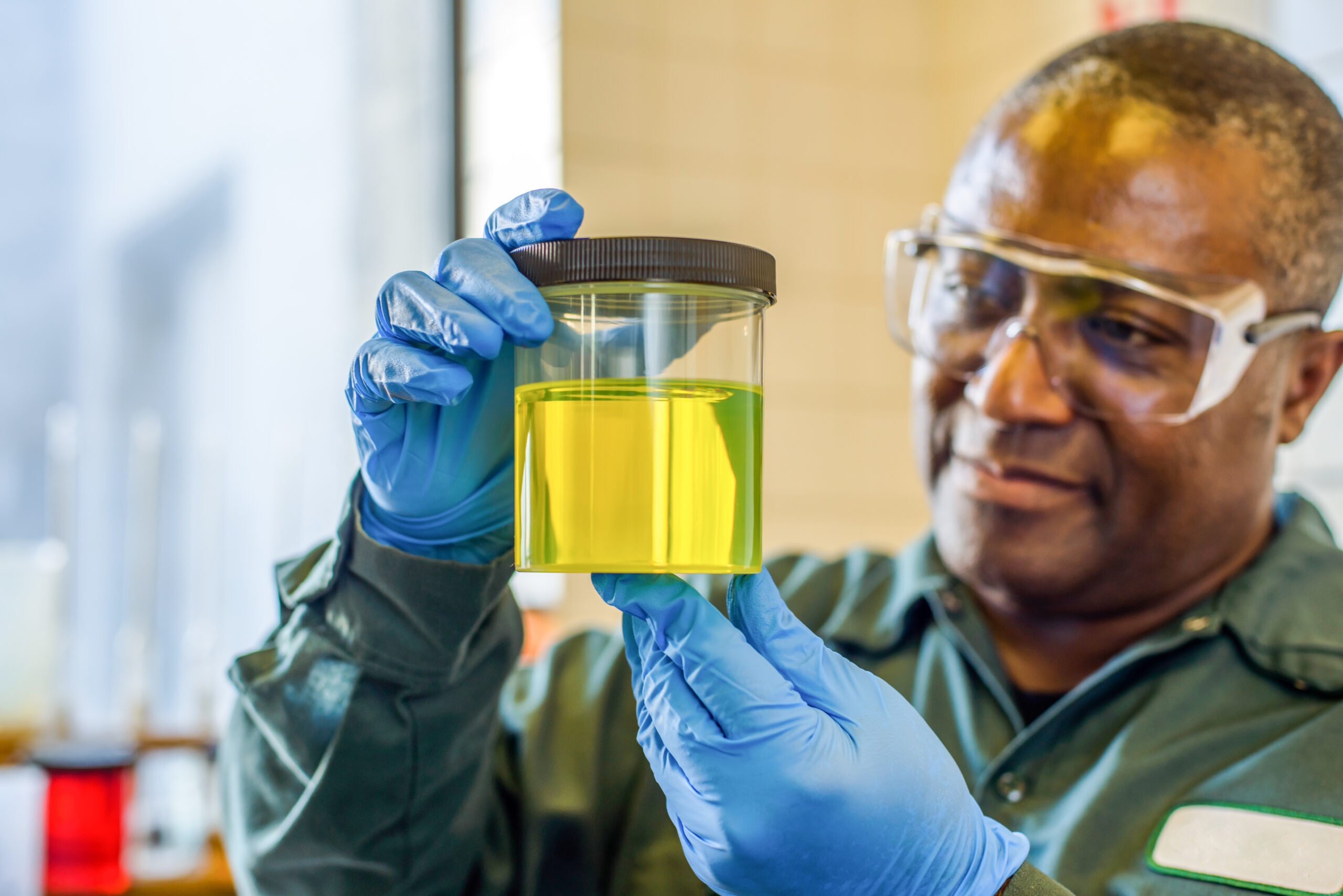Genes point to how some bacteria can gobble up electricity
Researchers hope to harness this microbial superpower to store energy or make biofuels

Researchers say bacteria, such as the rod-like microbes seen here, offer an appealing way to make new kinds of fuels.
Raycat/E+/Getty Images Plus
Bacteria can have superpowers. Some flourish in almost any environment. Others can transform toxic materials into harmless sludge. A bacterium called Shewanella oneidensis can do both. But this microbe also has a much rarer superpower: It absorbs and produces electricity. In fact, new research suggests, these bacteria may be able to use energy collected from wind or solar sources to make fuels to run vehicles and more.
“I think of these organisms as eating electricity,” says Annette Rowe. She’s a microbiologist at the University of Cincinnati in Ohio. Her team has just identified which genes the microbe uses to gobble electricity.
Electrons are negatively charged particles. A moving stream of them creates an electric current. Scientists already knew that Shewanella can move electrons back and forth across its cell wall. But they didn’t know exactly how the microbes controlled their current, Rowe says.
“The pathway for getting the electrons in and out of the cell is like a wire,” says Rowe. “It allows current to flow from the inside to the outside.” Reverse the flow, she says, and “you can drive electrons into the cell.” The cell could then use those electrons to do some other job, such as generate current. Or it could store the energy to use later. Those electrons could later be used to make fuel, for example.
Rowe knew that Shewanella’s cellular “wire” had to be controlled by genes. But which ones?
Buz Barstow was able to help. He is a biological engineer at Cornell University. It’s in Ithaca, N.Y. Earlier, he had made a list of nearly 4,000 of this bacterium’s genes. That list also included mutations, or changes, in those genes. Rowe tested these mutants to find the genes that made up Shewanella’s cellular “wire.”
Within a cell, a gene can deleted. For the new study, Rowe and her colleagues tested groups of bacteria with groups of deleted genes. Their goal: to see which deleted genes allowed the bacteria to pull in electrons. These were likely genes involved in making the cell’s “wire.”
That was no easy task. “It was really tricky to look for electron flow” and track the electrons, she says. But in time they devised a clever test. They grew the different mutated bacteria on glass covered by a thin metal film. Then they attached a wire to the bacteria. When they sent an electric current through the wire, they could measure how much the bacteria absorbed or added. If electrons didn’t flow, the scientists knew the deleted genes must have been the ones needed for electron flow.
In time, they narrowed in on five such genes that Shewanella apparently uses to absorb electrons. Each gene tells the cell how to make a protein. Some of those proteins likely “grab” electrons and bring them into the cell. Others may send signals within the cell that guide the process. Still others can likely expel electrons from the cell.
Bacterial biofuels
Scientists see many ways to use electric microbes. One would be to make biofuels. These differ from fossil fuels, such as coal and natural gas. (Fossil fuels are rich in carbon from decayed remains of ancient living things.) Ethanol, which can be made from corn or sugarcane, is a biofuel that can be added to standard gasoline. Cars that run on diesel can be adapted to run on another biofuel. Called biodiesel, it is fuel made from vegetable oil or animal fats.
Biofuels get their carbon from sources like plants or animal wastes. One day, they may even get their carbon with the help of bacteria, says Rowe.

Shewanella is among bacteria thatcan pluck carbon atoms out of carbon dioxide. They can use it to create other, larger molecules that could be burned as a biofuel. And powered by the electrons it gobbles, Shewanella could keep making these molecules, Rowe says.
Knowing which genes drive the electron-eating could help scientists develop new biofuels, says Rowe. Even better would be if the electrons that “feed” the bacteria come from wind or solar power. Such sources could power the biofuel-making process without adding warming carbon dioxide to the air.
Elad Noor is an environmental scientist. He works at the Weizmann Institute of Science. It’s in Rehovot, Israel. There, he’s helping to develop new ways to “fix” carbon — that is, to pull carbon from carbon dioxide to build other chemical compounds. Using bacteria to create biofuels is attractive because the bacteria can regenerate and should be able to repurpose the carbon. Soring energy in bacteria also would be green, he adds. After all, the microbes don’t need dangerous metals, as a normal battery would.
However, working with living organisms is complicated, he warns. “Biological systems are hard to predict,” he says. “There are ways to store energy that are much more efficient.”
The genes that Rowe’s team found in Shewanella show up in other bacteria. The group plans to search for others that can store or release electrons. Rowe also wants to try to improve Shewanella’s abilities, because these “are the organisms we know the most about.”







